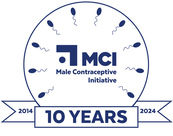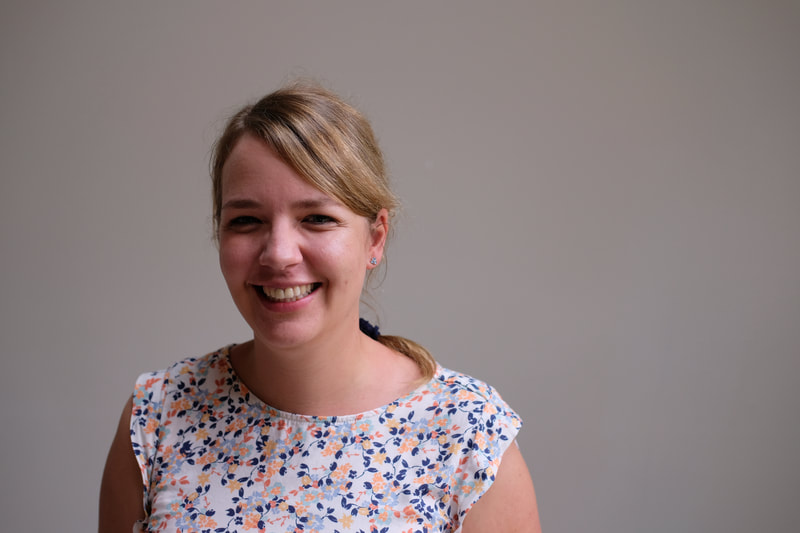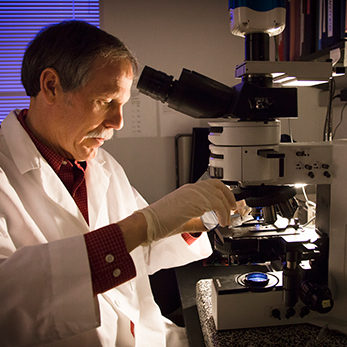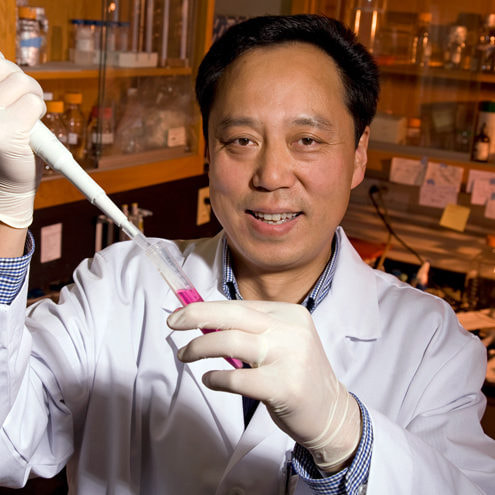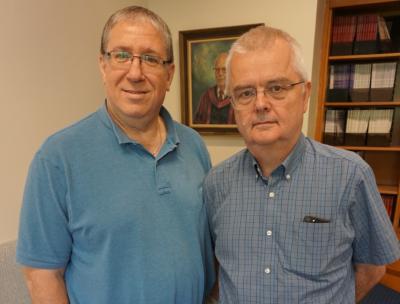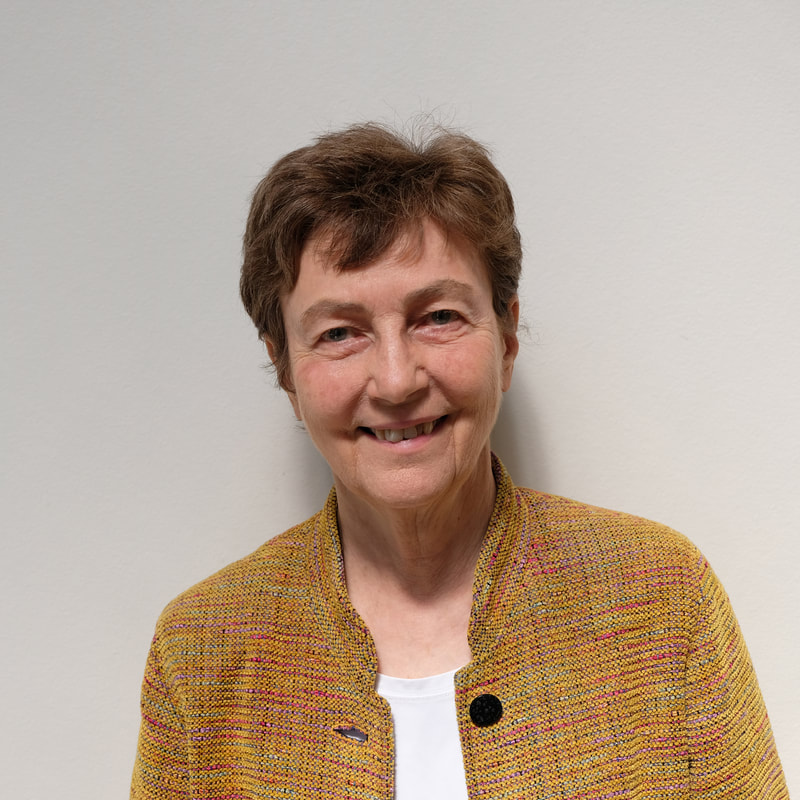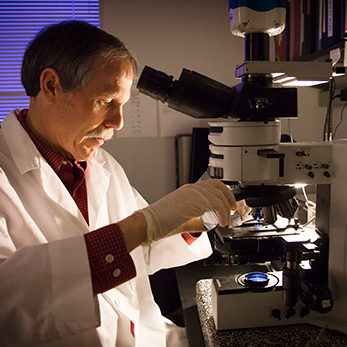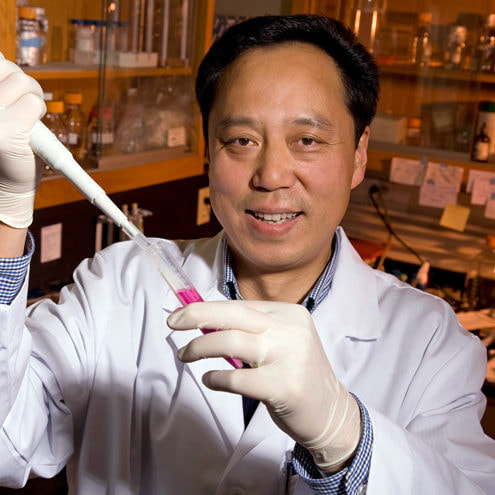Celebrate MCI's 10th Anniversary!Male Contraceptive Initiative was founded in 2014 and over the past 10 years we have grown to be the second largest funder of non-hormonal, reversible male contraception research and development, second only to the U.S. Federal Government!
As a non-profit, our success is inextricably linked to your support. Without your generosity, we simply would not be able to do the work that we do, and that the world so desperately needs. |
Consider this: In just 10 years, we have accomplished the following:
In celebration of this, and to help ensure future success, we have created a special fundraising campaign and we encourage you all to show your continued love and support for male contraception by donating today. Together we can make "Reproductive Autonomy for All" a reality!
- Invested $14.3M in non hormonal research and development activities
- Funded 26 non hormonal reversible male contraceptive targets
- Supported 77 researchers, fellows and interns
- Contributed to 2 non-hormonal male contraceptive products that are currently being tested in humans!
In celebration of this, and to help ensure future success, we have created a special fundraising campaign and we encourage you all to show your continued love and support for male contraception by donating today. Together we can make "Reproductive Autonomy for All" a reality!
History
|
Contraceptive research and development has been a human concern for thousands of years, with incredible milestones from condoms hundreds of years ago to 21st century methods being developed today. We contribute to the advancement of male birth control research and development iby funding research, while also working to ensure the market demand and needs for these products is well understood and articulated. Each year is more exciting and impactful than the last as we build towards achieving reproductive autonomy for all.
|
|
Laura Hertel,
Founder & CEO $___ / _ Years Awarded __2024 |
Laura Hertel, PhDNuapoch, Inc.
Oakland, California About
Nuapoch, Inc. is a start-up company seeking to develop non-hormonal, effective, and reversible contraceptives by targeting sperm maturation factors. The company was founded in January 2024 by Dr. Laura Hertel and is headquartered in Oakland, California. Our Grant
MCI is supporting Nuapoch’s efforts to determine the three-dimensional structure and key functional domains of an epididymal protein involved in sperm maturation, to enable its targeting with new contraceptive drugs. |
Sign up to learn more!
MCI issues a monthly newsletter containing up-to-date information about male contraception research and development and issues related to the field. Please click the button below to sign up to receive this informative newsletter directly to your email's inbox each month!
What are the male birth control research activities MCI is supporting?
This section highlight some of the projects we are supporting in an effort make the work more accessible to the general public:
A single injection that ensures a man cannot cause a pregnancy for years and is completely reversible.
|
Our grantee Contraline has invented a proprietary hydrogel called ADAM™ that is implanted into the vas deferens through a minimally invasive, outpatient procedure.
The hydrogel works by blocking sperm from traveling through the vas deferens. Similar to intrauterine devices (IUDs) for women, Contraline’s contraceptive is designed to last for years and be reversible. MCI’s support will be used by Contraline to prepare for filing with the FDA and initiating first-in-human trials. |
A reversible male birth control that impacts the head of the sperm, preventing it from fertilizing an egg.
|
Our grantee Dr. Wei Yan and his team of researchers have developed a new compound derived from a Chinese herb called the Thunder God vine (Tripterygium Wilfordii Hook F).
The compound works by causing the head of sperm to be malformed such that they are not able to connect with and fertilize a female egg. This effect only occurs while the compound is consumed, and normal function is fully restored after discontinuing use. MCI’s support allowed Dr. Yan and his team to explore the effects of the compound and publish their results. Because of MCI’s grant, our sister organization Contraceptive Accelerator Network is performing nonclinical studies on Triptonide that advance it towards human studies. |
|
Our grantee Dr. Mario Buffone has been working in the field of sperm physiology for two decades. His lab seeks to understand the complex process of mammalian sperm capacitation, the change sperm undergo in the female reproductive tract that enables them to penetrate and fertilize an egg.
Dr. Buffone is working to screen and identify drugs that are able to prevent the capacitation and therefore render sperm incapable of fertilizing an egg. MCI is supporting the Buffone lab’s studies with the intent of moving towards in vivo preclinical studies. |
A biodegradable implant injected just below the skin’s surface that can deliver a male contraceptive over a sustained period of time.
|
Our grantee Dr. Rahima Benhabbour designs and fabricates delivery platforms for HIV prevention, cancer treatment, and contraception.
Dr. Benhabbour launched her first start-up AnelleO, Inc. in 2016, focusing on developing 3D-printed intravaginal rings for the treatment of infertility. MCI’s support will help facilitate studies that develop and implement an injectable device that can carry drug and translate into human studies. |
A daily, or even on-demand, method of male birth control that prevent sperm from being able to swim when taken.
|
Our grantee Dr. Gunda Georg’s group has published over 200 scientific articles on the design, synthesis, and evaluation of biologically active agents. In addition to male contraception, her lab investigates areas of cancer and female contraception.
Dr. Georg's lab has focused on investigating the testis-specific serine kinase (TSSK) family. These proteins are expressed after sperm have been developed, and are likely involved in multiple steps that could make them excellent contraceptive targets. MCI’s support will help Dr. Georg’s team investigate the sperm-specific isoform of Na,K-ATPase, which is crucial for sperm motility (e.g., sperm’s ability to swim). |
|
Our grantee Dr. Mike O’Rand is the President and Chief Scientific Officer of Eppin Pharma, named after the protein EPPIN which is a critical component of sperm development.
Dr. O’Rand is developing a compound called EP055, a small organic compound that that targets EPPIN on the surface of sperm and prevents sperm from swimming. MCI’s support will help support Dr. O’Rand Investigational New Drug (IND)-enabling milestones that are required for Eppin Pharma to begin the process of entering first-in-man studies for EP055. |
A reversible male birth control method that causes sperm to become sterile.
|
Our grantee Dr. Stephen L’Hernault and his lab have worked on spermatogenesis (i.e., sperm creation) and fertilization for over 30 years.
Dr. L’Hernault is working on developing compounds that can block the function of the IZUMO1 protein, which is required to fertilize an egg. MCI’s support will help Dr. L’Hernault’s team to identify small compounds that reversibly block the function of the IZUMO1 protein. |
A cohort of excited young researchers motivated by curiosity, ambition, and the social good associated with male birth control.
|
Our Fellowship program features a mix of graduate and postdoctoral trainees, all working towards creating non-hormonal, reversible male contraceptive methods.
Our Fellows work on a diverse portfolio of projects that help move the male birth control forward. Our support allows our distinguished Fellows to focus on the research, publish data, and build the background they need to sustain a long career as an investigator. |
An on-demand method of male birth control that you take just before sex.
|
Drs. Lonny Levin and Jochen Buck are professors at Weill Cornell Medicine and are working on inhibitors of soluble adenylyl cyclase (sAC) as on-demand male contraceptives. Their deep expertise in sAC keeps them attuned to the effects of inhibitors on sperm functions such as motility.
MCI is supporting work that develops novel inhibitors of sAC as on-demand male contraceptives as well as translational research that assesses the pharmacodynamics of inhibitors on human sperm. These steps are crucial to understanding how the drug stays associated to sperm after ejaculation and its potential contraceptive efficacy. |
What are MCI's advocacy efforts to support male birth control?
This section highlights some of the advocacy and outreach efforts we conduct in order to illustrate the demand and need for male birth control:
Working to understand needs and perceptions to develop a menu of male contraceptives that meets everyone’s needs.
|
Our grantee Planned Parenthood North Central States (PPNCS) provides health care to nearly 115,000 people and health education to more than 99,000 people across a five-state region (Iowa, Minnesota, Nebraska, North Dakota and South Dakota) in the United States.
With MCI’s support, PPNCS will engage in critical market research activities by using mixed methods surveys to engage critical stakeholders on their reproductive health needs and desires in hopes that this will help inform research and product development activities. |
|
Outsight4Development, Alstonia Impact, and DesireLine conducted a robust market research study across 7 distinct markets around the world to develop an understanding of the demand for male contraception, men’s interest in and preferences for novel forms of male birth control, and the level of trust that female partners have in their male partners to use birth control. Funding for the male respondent research was supported by funding from the Bill & Melinda Gates Foundation. The Male Contraceptive Initiative provided funding to cover female partners of male respondents.
Findings from this nationally/regionally representative study show that there is significant interest for novel male contraceptives among men and women. Men have interest in trying a new male contraceptive within a year of its availability, and higher interest in trying a new male contraceptive at some point. Female partners surveyed have high trust in men taking contraception, and have high interest in male partners taking contraception. |
|
Our Consumer Research Study was the largest survey in the United States in the past decade exclusive to sexually active men ages 18-44 and focused on developing a better understanding of their attitudes, needs and motivations regarding the future of male birth control.
Developing a keen understanding of the family planning interests of communities domestically and internationally is a critical component of our market research activities. Our support of market research activities helps our grantees better understand the needs of those they’re developing contraceptives for, while framing the demand for male birth control methods in the general public. |
Supporting men and women preventing pregnancy as a unit.
|
Our Shared Risk publication advocates for creating a new ethical framework for assessing risks and benefits for new forms of male birth control.
Currently, the risks associated with pregnancy focus solely on the physical. As women are the only ones capable of physically bringing a baby to term, current thinking prevents a fair assessment of the risks men face when it comes to pregnancy. Our work is a necessary step towards reframing the concept of risk such that it creates a mandate for providing more and better male birth control methods. |
Facilitating a commercial pathway for male contraception driven by collaboration, transparency, and the public good.
|
Our Ideation Events bring together diverse, multi-disciplinary groups of subject matter experts in order to identify opportunities and challenges for the male birth control industry, while driving collaboration and innovation.
Our initial ideation events have greatly aided in developing a shared understanding of how best to move the male birth control field forward, and helped us to create a network of collaborators to champion “Team Science” as a development mandate. Our support allows participants to engage in innovative problem-solving activities as they build professional relationships to help accelerate their work. |
Fostering a community of practice that brings together expertise from across the spectrum to get male birth control to market faster.
|
Our Lemonade Stand Webinar Series explores various aspects of the work necessary to develop the next generation of non-hormonal, reversible male contraception.
Launched in response to the demand amongst the research community for more opportunities to engage and collaborate, our monthly webinars convene subject matter experts and the general public alike. Our support helps facilitate expanding people’s understanding of the male birth control field, demystify the science behind male contraception, and allow people to engage with each other more intimately. |
Producing an engaging audio experience featuring subject matter experts and everyday people investigating the past, present, and future of male birth control.
|
Our audio series “Intended” is the only podcast solely dedicated to exploring the fascinating world of male birth control.
The series features interviews with a holistic set of stakeholders representing all facets of male birth control research and development, as well as the people seeking additional male methods of contraception in an effort to make the science of male contraceptives more accessible while also illustrating the interest in and demand for male birth control. |
Creating an educational platform that provides people with the foundational understanding of male reproductive biology and contraception.
|
Our Male Reproduction & Contraception primers provide an introduction to male reproductive biology that is easy-to-understand and engaging.
The primers feature concise overviews of the individual components of the male reproductive system that afford readers the opportunity to better understand how this system works, as well as how it can be disrupted in order to develop the next generation of male contraception. Providing this foundational knowledge is critical to ensuring people’s understanding of the importance of these upcoming contraceptives. |
Developing a database of potential targets that illustrates the breadth of male contraception research and development.
|
MCI’s Non-hormonal, Reversible Male Contraception Database features all of the non-hormonal male birth control targets that have been identified to date, including those that MCI is directly supporting financially.
The database is a “living” entity that we update in an ongoing basis in an effort to keep the research community and general public abreast of the promising work that could lead to next generation male contraceptives. It seeks to answer two of the most pressing questions in the male birth control field: “What potential male contraceptives are out there?” and “When will they be available?” |
Designing a system of tools that facilitate creative brainstorming while developing a sense of shared empathy.
|
MCI’s Personas are fictional characters created to represent different user and beneficiary types that might use a product (e.g., male birth control) in a similar way.
These personas are especially useful during ideation activities for new male contraceptives and related services as they allow for the extrapolation of user preferences to inform attributes, thereby removing some of the ambiguity inherent in new product design. |
Sharing an inclusive understanding of the needs of traditionally underserved communities.
|
MCI’s LGBTQIA+ content seeks to take into consideration the diversity of interests and needs of this community when developing the next generation of male contraception.
Today’s youth will be tomorrow’s users of these new methods. Given that around 5% of young adults in the United States today identify as either transgender or nonbinary, there is a clear need to move beyond the gender binary in order to ensure future contraceptives meet a diversity of needs and preferences. On this page, we share details about different communities within the LGBTQIA+ spectrum in an effort to ensure their needs are understood and accounted for. |
Making a clear connection between male contraception and the world’s most pressing challenges.
|
We studied the United Nation’s Sustainable Development Goals (SDGs) to identify ways in which new methods of male birth control can help the world achieve each of them.
The SDGs are a collection of 17 interlinked global goals designed to be a "blueprint to achieve a better and more sustainable future for all", and were set up by the United Nations to be achieved by the year 2030. Through our work, we provide direct connections between each of the goals and male contraception in order to illustrate the potential, incredibly positive impact that new methods of male birth control can have in achieving our shared sustainability goals. |
Creating a multimedia learning journey that facilitates a holistic understanding of male contraception.
|
We collaborated with a team of students to develop a Digital Manual containing learning modules that empower students and the general public with the information necessary to understand the importance of male contraception.
MCI worked with Masters of Public Health students from the University of Michigan’s School of Public Health to create a fun, interactive educational system in order to provide additional learning opportunities for engaged audiences. Our co-created Digital Manual allows people to engage with the information they need and learn at their own pace. |
Hear from us!
Please click on an image or button below to access materials developed by our youth champions:
Get Involved!
The Campus Ambassador Program is available to all university students, including those pursuing advanced degrees. MCI’s CAP seeks to empower university students with the resources and support necessary to advocate for male contraception and “Reproductive Autonomy for All.” Eligible students are encouraged to reach out to us at [email protected] to be considered for the program.
CAP Members
Male Contraceptive Initiative's Campus Ambassador Program features students from colleges and universities all over the world. In this section, we highlight the current members to provide an introduction to the amazing advocates that help advance our mission and vision on campus!
|
Lennox Masika
Lennox is an undergraduate student at Jomo Kenyatta University of Agriculture and Technology pursuing Bachelor of Science in pharmacy. He is passionate about Sexual Reproductive Health and Rights, focussing on, but not limited to, safe contraception, menstrual hygiene, mental health, gender based violence, and drug and substance abuse. Moreover, he has a keen interest in pharmaceutical and general public health research and looks forward to positively impacting his generation and those ahead on SRHR through awareness and solution oriented research. |
Olwyn Bartis
Olwyn is an undergraduate at Duke University studying economics and medicine. She is from Charlotte, North Carolina, a member of Duke's varsity swim team, and a Baldwin Scholar. While interested in the possibility of a career in reproductive medicine, she is passionate about fostering conversations related to sexual autonomy and contraception, as current social dynamics present reproductive health as a burden rather than a facet of one's autonomy. She hopes that her experience with MCI will enable her to both learn more about scientific advances in male contraception research while also partaking in important conversations with others. |
Bianca Sjoenell
Bianca is currently on a pre-med track at Duke University, and in the process of creating her own major that focuses on the intersection of gender, sex, sexuality, and medicine. She is specifically interested exploring how gender, sex, and sexuality function as social determinants of health for those who identify as non-binary. Bianca is passionate about advocating for reproductive autonomy for all and dedicated to working towards deconstructing the social stigmas that surround mental, sexual, and reproductive health. |
About
Male Contraceptive Initiative operates with a limited staff supported by a network of trusted advisors and subject matter experts. As such, it is imperative that we mobilize and empower supporters to help us advocate for additional forms of non-hormonal, reversible male contraceptives and champion the cause of "Reproductive Autonomy for All". This is the motivation for creating and maintaining our Campus Ambassador Program (CAP).
CAP Members engage with MCI on a project-based, volunteer basis. MCI Staff provides support through mentoring and collateral development, but CAP members are encouraged to develop their own projects in line with their individual interests and expertise. In this way, we can help ensure that the myriad perspectives around such a critical topic as male birth control are represented, thereby helping to catalyze action and discourse in new and different contexts and settings.
CAP Members engage with MCI on a project-based, volunteer basis. MCI Staff provides support through mentoring and collateral development, but CAP members are encouraged to develop their own projects in line with their individual interests and expertise. In this way, we can help ensure that the myriad perspectives around such a critical topic as male birth control are represented, thereby helping to catalyze action and discourse in new and different contexts and settings.
Male Contraceptive Initiative's vision is "Reproductive Autonomy for All". We set about achieving this by providing funding and advocacy support for the development of new methods of non-hormonal, reversible male contraceptives. The reality is that it will be years before these new contraceptive methods are available to the general public. As such, it is critical that we engage with people today to ensure that they understand how these new contraceptives work as well as the potential impact they will have on the world. This is particularly true for today's youth as they will be tomorrow's users and beneficiaries of these methods.
MCIs Campus Ambassador Program (CAP) is composed of university students passionate about male contraceptive development, research, and advocacy who want to represent MCI on their university campuses.
MCI's Youth Advisory Board Undergraduate Project Grant
MCI's Youth Advisory Board (YAB) is a group of young people (ages 16-28) providing their perspectives to our work and advocating for male contraception. The YAB Project Grant is for undergraduate students interested in working on projects related to new male contraception. View previous grantees here.
Applications for the 2023 grant are currently closed. Those interested in learning more are encouraged to contact [email protected] for any questions.
Applications for the 2023 grant are currently closed. Those interested in learning more are encouraged to contact [email protected] for any questions.
Put grantees here with headshots, project descriptions, link to project pdf
2022-2023 YAB Grantees
|
Youth for Male Contraception Project
Youth for Male Contraception is a youth-centric advocacy website aimed at fostering awareness and acceptance of newer, non-hormonal, and reversible male contraception methods within the context of Kenya. Visit their website here. |
|
Carol Kangethe: Project Manager
Carol is a medical doctor diversifying into global health and health informatics, leveraging her clinical expertise to drive innovation and optimize healthcare systems for improved health outcomes. Her core principle is that patient-centered medical care extending across the entire continuum of the patient journey is the best approach for the cultivation and fortification of optimal health and wellness. Through the Youth for Male Contraception advocacy initiative, Carol Kangethe aims to enhance the reproductive healthcare experience of youth by engaging with youth contraception users and, in turn, contributing to improved health outcomes. |
Ibsen Ongidi: Research Advisor
Ibsen is a health science researcher and graduate medical officer at the University of Nairobi, with a passion for sexual and reproductive health advocacy and research. He also loves mentoring undergraduate medical students on exploring physician-scientist pathways. He is seeking use the Youth for Male Contraception platform funded by Male Contraceptive Initiative to advance new methods of male contraception in the Kenyan cultural context. |
|
Sheila Awuor: Research Advisor
Sheila is a graduate of University of Nairobi in Kenya (medical doctor) and her passion is to bring health home through advocacy. Recently, she joined the Male Contraceptive Initiative and formed Youth Male Contraception just to drive the point home that males can also take part in contraceptive efforts. So Male Contraceptive Initiative is a platform to help enable this process. |
|
Jan Kaminski
Jan is a Psychology student at De Montfort University in Leicester, United Kingdom. His research looks at men’s online responses to a new vas-occlusive male contraception to identify men’s health concerns around the new method. It also involves interviewing experts to see how these health concerns can be mediated using scientific facts and the history of the method’s development. |
Team RESPEKT
This project explores young adults' knowledge, experiences, and attitudes towards male contraceptives. Team RESPEKT aimed to unlock the secrets behind young adults' perceptions and uncover the challenges they face with existing male contraception methods. They aimed to not only quantify knowledge but also ignite a spark of innovation in the realm of non-hormonal, reversible male contraception. Their mission is to bridge the gaps in male contraception for a more informed future full of diverse options for all.
This project explores young adults' knowledge, experiences, and attitudes towards male contraceptives. Team RESPEKT aimed to unlock the secrets behind young adults' perceptions and uncover the challenges they face with existing male contraception methods. They aimed to not only quantify knowledge but also ignite a spark of innovation in the realm of non-hormonal, reversible male contraception. Their mission is to bridge the gaps in male contraception for a more informed future full of diverse options for all.
|
Faith Anne Nyagichuhi
Faith is a dedicated SRHR advocate and leader of Team RESPEKT's Research Working Group. As a final-year medical student at Kenyatta University, her passion lies in contraceptive and menstrual health and hygiene. She leads a groundbreaking study, delving into the knowledge and experiences of young adults regarding male contraceptives. Beyond her advocacy, Faith finds solace in serene walks and the soothing embrace of nature. |
Nicolas Kioko
Nicolas is a finalist medical student at Moi University, School of Medicine. He is a member of the RESPEKT Research Team. He has previously served as the president for the Medical Students Association of Kenya (MSAKE) for the term 2020/2021 and the General Assistant for Africa under the International Federation of Medical Students Associations (IFMSA) for the term 2020/2021. He is a young research enthusiast who is extremely motivated to constantly develop his skills and grow professionally in the medical field. |
|
Angela Namiro
Angela is a final year medical student. She is a SRHR advocate and researcher whose goal is to ensure everyone enjoys their sexual and reproductive health rights for a productive and healthy society. |
Monicah Kitonga
Monicah is a medical student at Moi University, Kenya. She is passionate about research and policy formulation. In her downtime, she loves spending time with dogs and playing guitar. |
|
Alice Wanjiru Muritu
Alice is a medical student at the University of Nairobi, a volunteer with Team RESPEKT and member of the research-working group. She is a child of the earth and a passionate SRHR activist who believes that all human beings should be able to access their sexual and reproductive health rights. |
2021-2022 YAB Grantees
|
Kenitimi Bikikoro
Kenitimi is a student in Medical Lab Sciences at Niger Delta University. With a focus in Chemical Pathology, Kenitimi is undergoing bioinformatics training to monitor, diagnose, and treat human diseases. His project sought to use computational biology tools to predict potential vaccine candidates for nonhormonal, reversible, post-meiotic male contraception. |
Malena Gabri
Malena is studying social work at the University of Buenos Aires and is interested in improving the health outcomes of low-income populations. Her project aimed to understand young people’s perception of novel male contraception in Ciudad Autonoma de Buenos Aires and how new methods of contraception can address high rates of unintended pregnancy. |
|
Aryani Pallerla
Aryani is studying Neuroscience, Chemistry, and Creative Writing at University of North Carolina Chapel Hill. Her research is focused on female/male contraception and HIV prevention in drug delivery systems. Aryani’s project aimed to develop, characterize, and optimize a long acting and reversible injectable in situ forming implant (ISFI) for male contraception. |
Madeline Mahoney
Madeline is a second-year student at the University of Chicago involved in sexual and reproductive health research at Planned Parenthood North Central States. Madeline’s project aimed to investigate the perceptions of people who have undergone a vasectomy, in order to understand their preferences towards reversible contra sperm methods. |
History of Male Contraceptive Initiative
Male Contraceptive Initiative was founded in 2012 in response to the identified need for an organization dedicated to providing advocacy and funding support for the development of non-hormonal, reversible male contraceptive methods. Since then, the organization has experienced tremendous success and growth as we continue championing an underfunded and underrepresented area of sexual reproductive health. In the timeline below, we share some of the highlights from each year of the organization's existence.
2023
2023
- 2023 grantees Johan Andersen-Ranberg, Deborah Anderson, John Howl, and Steven L’Hernault are announced
- Male Contraceptive Initiative partnered with the Bill & Melinda Gates Foundation to fund a market research study across 7 distinct markets around the world to develop an understanding of the demand for male contraception, men’s interest in and preferences for novel forms of male birth control, and the level of trust that female partners have in their male partners to use birth control. The study was designed and conducted by Outsight4Development, Alstonia Impact, and DesireLine.
- MCI’s Kevin Shane invited to be a speaker at SXSW to highlight the significance of male contraception in “Reproductive Autonomy: It’s a We-Sponsibility”
2022
2022
- 2022 grantees Lonny Levin & Jochen Buck are announced
- Male Contraceptive Initiative launched its for-profit subsidiary Contraceptive Accelerator Network (CAN) to help ensure that promising non-hormonal, reversible contraceptive targets receive the support necessary to develop them as next generation birth control methods
- MCI worked with students from the University of Michigan’s School of Public Health to develop an educational digital manual that provides an introduction to and exploration of male reproductive biology and birth control
2021
2021
- 2021 grantees Nadja Mannowetz, Mike O'Rand, Gunda Georg, Jean-Ju Chung, and Thomas Garcia are announced
- Male Contraceptive Initiative launched its Non-hormonal, Reversible Male Contraception Target Database
- In an effort to connect male contraceptives to sustainability goals and challenges, MCI created a series about Male Contraception & The Sustainable Development Goals
- Male Contraceptive Initiative developed a series of educational primers to help inform people about male reproduction and contraception
- MCI created a robust set of “Personas” for the research community and general public to utilize in brainstorming about the contraceptives of the future
- Reaffirming its role as an ecosystem facilitator, MCI hosted a virtual ideation event with colleagues and peers in Australia to explore collaboration opportunities
- MCI published a forum outlining the purpose of and funding opportunities provided by Male Contraceptive Initiative
2020
2020
- Male Contraceptive Initiative partnered with Contraline, Inc. to provide a $1 million Program Related Investment (PRI) to support a first-in-human clinical trial for the company’s novel vas-occlusive contraceptive device, ADAM™
- 2020 Grantees Mike O’Rand, Mariano Buffone, Robert Braun, Alison Ojanen-Goldsmith, and Pablo Visconti are announced
- Oleksander “Sasha” Kirsanov, Saman Nayyab, and Md Abdullah Al Noman named 2020 MCI Fellows
- Brittany Chambers and Jaylan Weaver join us as our first fellows from North Carolina Central University
- Townshend Peters and Elyse Miller join us as our 2020 fellows from UNC Gillings School of Public Health
- 2020 MCI RFA announced with funding tracks of $150,000 and $300,000, including scope for behavioral research
- David C. Sokal, MD, steps down as Chair of the Board
- MCI publishes peer-reviewed articles in Biology of Reproduction and Contraception
- MCI launches Intended - the first podcast focused entirely on male contraception
2019
2019
- 2019 Grantees Mike O’Rand, Stephen Palmer, Steven L’Hernault, and Zhibing Zhang are announced
- Vas-occlusion grants awarded to Contraline and Revolution Contraceptives
- Four new research grants awarded from $150,000-$300,000
- Kathryn Carpenter joins as our first fellow from UNC Gillings
- MCI publishes our first consumer research study
- Pilot programs launched for Campus Ambassadors & a Youth Advisory Board
- Melanie Balbach, Jae Yeon Hwang, and Max Lyon named 2020 MCI Fellows
- 2019 RFA announced with funding tracks of $150,000 and $300,000
- Ideation event and convening of non-hormonal male contraceptive researchers hosted in San Francisco
2018
2018
- Four $150,000 seed grants awarded to early stage research universities in the US, Australia, and Argentina
- Co-authored a publication on the potential impact of new male contraceptives on unintended pregnancies in the journal, Contraception
- Deb Levine, MA is hired as Interim Executive Director
- Fellowships awarded to 2018 MCI Fellows Aaron Crapster and Liliya Gabalev
- Heather Vahdat, MPH is hired as Executive Director
- Kevin Shane is hired as Communications & Design Director
2017
2017
- Logan Nickels, PhD is hired as Director of Programs and Operations
- First $500k grant awarded to start-up, Vibliome, working on kinase inhibitors and their escape pathways
- Conducted market research survey on acceptability of novel male contraceptives with 1500 men in the US
2016
2016
- Partnerships established with FHI360 and DKT International
- Board of Directors expands to a total of 7
- Scientific Advisory Board convened
2015
2015
- Indiegogo campaign raises $10k in donations for MCI
- Grant awarded to Dr. Gary Flynn at the University of Montana
2014
2014
- Aaron Hamlin, JD, MBA hired as the first Executive Director
- Name of the organization is changed to Male Contraception Initiative (MCI)
2013
2013
- Article published in Genetic Engineering & Biotechnology News titled, “Men and Women Need a New Contraceptive” by David C. Sokal
- The Foundation for Male Contraception incorporated as a 501(c)3 organization
- First funding awarded from Elaine Lissner of the Parsemus Foundation
2012
2012
- David C. Sokal, MD gives a presentation making the case for new reversible male contraceptives at a WHO Technical Consultation in Geneva
Male Contraceptive Initiative's Key Milestones
Funding Highlight
|
Male Contraceptive Initiative's Fellowship Program
Our Fellowship program provides direct research support to graduates and postdoctoral fellows investigating novel ways of developing or supporting male contraceptives. This program is a critical component of our funding strategy as it helps to ensure promising, talented scientific minds stay engaged in the field, and that they receive the support and mentorship necessary to achieve success. Find additional details below! |
|
Please click on any of the images or buttons below to access videos for each category:
Completed Awards
MCI has provided funding support to the non-hormonal, reversible male contraception research community since 2017. In this section, we share details about our past awardees who have completed the projects that MCI supported. Please click on any of the images to be directed to each awardee's profile page in order to learn more.
MCI Grantees
In this section we share a collection of our current funding recipients, along with the lofty hypothetical realities that they are diligently working towards through their research and development efforts. Please click on any of the images to be directed to each awardee's profile page in order to learn more about their work that MCI is supporting.
MCI Awardees
Entrelac.coop - 2023
Entrelac.coopEntrelac.coop is a French Cooperative Society of Collective Interest promoting the development of the Androswitch, a wearable contraceptive device for men.
|
Sacyl Pharmaceuticals - 2022
Weill Cornell Medicine - 2022
Weill Cornell MedicineThe joint Levin-Buck laboratory at Weill Cornell Medicine is working on inhibitors of soluble adenylyl cyclase (sAC) as on-demand male contraceptives.
|
Yale University - 2021
Yale UniversityDr. Jean-Ju Chung is an Associate Professor at Yale University, and is an expert in membrane ion channels, specifically the sperm-specific contraceptive target, CatSper.
|
YourChoice Therapeutics - 2021
YourChoice TherapeuticsDr. Nadja Mannowetz is the Chief Scientific Officer of YourChoice Therapeutics, who is working on a novel inhibitor of the male contraceptive target Retinoic Acid Receptor Alpha. Entering first-in-human studies, they represent the forefront of male contraceptive research and development.
|
University of North Carolina at Chapel Hill - 2021
University of North Carolina at Chapel HillDr. Rahima Benhabbour is an Assistant Professor at the University of North Carolina at Chapel Hill where she studies novel delivery platforms and polymer-based devices that can solve current limitations in drug delivery.
|
Baylor College of Medicine - 2021
Baylor College of MedicineDr. Thomas Garcia is an Assistant Professor at Baylor College of Medicine where he studies spermatogenesis and male reproductive tract-specific proteins through the lens of functional genomics and proteomics.
|
University of Minnesota - 2018 & 2021
University of MinnesotaDr. Gunda Georg is a Regents Professor, Department Head, and Endowed Chair at the University of Minnesota. Her group has published over 200 scientific articles on the design, synthesis, and evaluation of biologically active agents such as male contraceptives.
|
Contraline - 2019 & 2020
ContralineKevin Eisenfrats is the CEO and Co-Founder of Contraline, who is developing a reversible, non-hormonal contraceptive option for men that can last years. With an investment from MCI, their medical device ADAM™ is entering first-in-human studies and moving towards regulatory approval.
|
Eppin Pharma - 2019, 2020 & 2021
Eppin PharmaDr. O'Rand is the CEO of Eppin Pharma, who is developing a non-hormonal method of male contraception that may be usable either on-demand or as a daily pill. Nearing first-in-human studies, they represent the forefront of pharmacologic, non-hormonal male contraceptive methods.
|
The Jackson Laboratory - 2020
The Jackson LaboratoryDr. Robert Braun is a Senior Advisor and Janeway Distinguished Chair at the Jackson Laboratory. His work focuses on the biological basis of development, and the use of mouse models to study fertility and contraception in innovative ways.
|
Instituto de Biologia y Medicina Experimental - 2020
Instituto de Biologia y Medicina ExperimentalDr. Mariano Buffone is a Scientific Researcher from the National Research Council (CONICET) at Argentina’s Instituto de Biologia y Medicina Experimental (IBYME-CONICET) in Buenos Aires. Mariano has been working in the field of sperm physiology for two decades, studying the complex process of mammalian sperm capacitation.
|
Planned Parenthood North Central States - 2020
Planned Parenthood North Central StatesAlison Ojanen-Goldsmith, MPH, Research Scientist and Manager, and Asha Hassan, MPH, Associate Research Manager and Reproductive Health Equity Predoctoral Fellow are part of Planned Parenthood North Central States and explore the attitudes and preferences of contraceptive technologies among users.
|
University of Massachusetts, Amherst - 2020
University of Massachusetts, AmherstDr. Pablo Visconti is a Professor at the University of Massachusetts, Amherst. Focusing on reproductive biology and the process of sperm capacitation, his work elucidates the mechanism of action of many male contraceptive targets.
|
Emory University - 2019 & 2022
Emory UniversityDr. Steven L’Hernault is Professor and Chair of Biology and Emory University. Studying the basic mechanisms of spermatogenesis and fertility, he has discovered several contraceptive targets that can be developed for male methods.
|
Completed Grants
Vibliome Therapeutics - 2017
Vibliome TherapeuticsDr. Rob Goodwin is the CEO of Vibliome Therapeutics, a start-up that’s developing inhibitors of a kinase essential for male fertility. Vibliome was MCI’s first major grant, and has since brought in MCI Fellow Aaron Crapster to serve as a Principal Scientist.
|
Instituto de Biologia y Medicina Experimental - 2018
Instituto de Biologia y Medicina ExperimentalDr. Patricia Cuasnicủ is a Senior Scientific Researcher from Argentina’s Instituto de Biologia y Medicina Experimental (IBYME-CONICET) in Buenos Aires. Patricia has been working in the field of male contraception since 1984, and has been a leader in the field, serving with a World Health Organization Task Force, CONRAD, and other organizations.
|
Monash University - 2018
Monash UniversityDr. Sabatino Ventura is a Senior Lecturer at the Monash Institute of Pharmaceutical Sciences in Parkville, Australia, in Melbourne. Sab’s work focuses on smooth muscle contraction, and harnessing it in order to create a male contraceptive.
|
University of Nevada, Reno - 2018
University of Nevada, RenoDr. Wei Yan, formerly of University of Nevada, Reno, is Professor of Medicine at UCLA where he focuses on the development and function of germ cells. Dr. Yan has published over 130 peer-reviewed research articles, and discovered a novel plant extract that could be utilized as a male contraceptive.
|
Revolution Contraceptives - 2019
Revolution ContraceptivesDr. Linda Brent is the Executive Director of the Parsemus Foundation, and oversees the Vasalgel project run by Revolution Contraceptives. Their work seeks to bring a vas-occlusive, reversible method of contraception to users that could last for years.
|
FHI 360 - 2019
FHI 360FHI 360 is an international nonprofit working to improve the health and well-being of people in the United States and around the world. Their focus on contraception includes development and access, but also the assessment of the acceptability and preferences of a variety of methods of contraception.
|
Wayne State University - 2019
Wayne State UniversityDr. Zhibing Zhang is an Associate Professor at Wayne State University in Detroit, Michigan. His work focuses on studying the complex mechanisms of spermatogenesis, and how these mechanisms can be exploited to make new male contraceptives.
|
Baylor College of Medicine - 2019
Baylor College of MedicineDr. Stephen Palmer is an Associate Professor at the Center for Drug Discovery at Baylor College of Medicine. With 25 years experience across pharmaceutical discovery and start-ups, his work with Martin Matzuk uses powerful screening tools to find new drugs against male contraceptive targets.
|
2022*
* On Friday, June 24, 2022, the US Supreme Court overturned Roe v. Wade, the landmark piece of legislation that made access to an abortion a federal right in the United States. The decision dismantled 50 years of legal protection and paved the way for individual states to curtail or outright ban abortion rights.
2018
Recruitment for clinical trials of the hormonal male birth control gel NES/T begins.
2014
* Male Contraceptive Initiative was founded in an effort to provide funding and advocacy support for the research and development of new non-hormonal, reversible methods of male contraception.
1984
An estimated 50 to 80 million women worldwide take The Pill.
1982
The Pill's impact on women in the workforce is significant. With highly effective birth control now at their disposal, 60% of women of reproductive age are employed in America.
1968
Sales of the Pill hit the $150 million mark. American women can now select from 7 different brands.
David Niven and Deborah Kerr star in the Hollywood film Prudence and the Pill. Birth control, once considered obscene and vulgar, is now a pop culture icon.
David Niven and Deborah Kerr star in the Hollywood film Prudence and the Pill. Birth control, once considered obscene and vulgar, is now a pop culture icon.
1967
Over 12.5 million women worldwide are on the Pill.
1965*
* Just five years after the Pill's FDA approval, more than 6.5 million American women are taking oral contraceptives, making the Pill the most popular form of birth control in the U.S. Searle still dominates the market, and does $89 million in sales of Enovid.
The U.S. Supreme Court strikes down the Comstock laws that banned contraception.
The U.S. Supreme Court strikes down the Comstock laws that banned contraception.
1964
One quarter of all couples in America using birth control choose the Pill.
The Pill becomes the most popular form of reversible birth control in America.
Despite general public approval for birth control, ghosts of the Comstock Laws linger. Eight states still prohibit the sale of contraceptives, and laws in Massachusetts and Connecticut still prevent the dissemination of information about birth control.
The Pill becomes the most popular form of reversible birth control in America.
Despite general public approval for birth control, ghosts of the Comstock Laws linger. Eight states still prohibit the sale of contraceptives, and laws in Massachusetts and Connecticut still prevent the dissemination of information about birth control.
1963
Around 2.3 million American women on the Pill.
1962
1.2 million American women on the Pill.
1960s
Enovid is approved for the purposes of contraception by the FDA.
1959
Less than two years after FDA approval of Enovid for therapeutic purposes, an unusually large number of American women mysteriously develop severe menstrual disorders and ask their doctors for the drug. By late 1959, over half a million American women are taking Enovid, presumably for the "off-label" contraceptive purposes.
1957
The FDA approves the use of Enovid for the treatment of severe menstrual disorders and requires the drug label to carry the warning that Enovid will prevent ovulation.
1956*
* Enovid is the first birth control submitted for FDA approval in America.
1954
The Pill regimen still in use today is established for only 21 days, followed by a 7-day break to allow for menstruation. They know the Pill will be controversial and want oral progesterone to be seen as a "natural " process, not something that interferes with the normal menstrual cycle.
1953
* Katharine McCormick, millionaire philanthroper and heir to the International Harvester fortune writes Gregory Pincus a check for a huge sum -- $40,000 -- with assurances she will provide him with all the additional funding he will need. The Pill project is restarted.
1951
The Planned Parenthood Federation of America runs 200 birth control clinics. Margaret Sanger has been successful in fighting legal restrictions on contraceptives, and birth control has gained wide acceptance in America. Still, Sanger remains deeply unsatisfied, because women have no better methods for birth control than they did when she first envisioned "the pill" over 40 years earlier. Margaret Sanger manages to secure a tiny grant for Gregory Pincus from Planned Parenthood, and Pincus begins initial work on the use of hormones as a contraceptive at The Worcester Foundation. Pincus sets out to prove his hypothesis that injections of the hormone progesterone will inhibit ovulation and thus prevent pregnancy in his lab animals. Pincus goes to the drug company G.D. Searle and requests additional funding from them for the pill project. Searle's director of research tells Pincus that his previous work on an oral hormonal contraceptive for women was "a lamentable failure" and refuses to invest in the project.
1950s
Americans spend an estimated $200 million a year on contraceptives. Due to massive improvements over the past decade in condom quality and a growing awareness of the inadequacies of douches, "rubbers" are the most popular form of birth control on the market. Although the vast majority of doctors approve of birth control for the good of families, anti-birth control laws on the books in thirty states still prohibit or restrict the sale and advertisement of contraceptive devices. It is a felony in Massachusetts to "exhibit, sell, prescribe, provide, or give out information" about them. In Connecticut, it is a crime for a couple to use contraception.
1928
Almost 30 years after the discovery of hormones, scientists at the University of Rochester in New York identify progesterone, the ovarian hormone. They conclude that this hormone plays a crucial role in preparing the womb for and sustaining a pregnancy.
1923
Margaret Sanger successfully opens the first legal birth control clinic in the U.S. with the stated intent of only using contraceptives for medical purposes, such as the prevention of life-threatening pregnancies and in accordance with the Crane decision.
1921
Margaret Sanger establishes the American Birth Control League, the antecedent of the Planned Parent Federation of America.
In the 1920s, the U.S. birth rate drops by half. Condom reliability is still terrible by modern standards, but people achieved effective birth control by combining condoms, the rhythm method, male withdrawal, diaphragms, and/or intrauterine devices.
In the 1920s, the U.S. birth rate drops by half. Condom reliability is still terrible by modern standards, but people achieved effective birth control by combining condoms, the rhythm method, male withdrawal, diaphragms, and/or intrauterine devices.
1915
Anthony Comstock dies, but his anti-birth control laws remain entrenched. In New York City a group of women form the National Birth Control League, an antecedent of the International Planned Parenthood Federation.
1914*
* Margaret Sanger coins the term "birth control" and dares to use the phrase in the June 1914 issue of her journal “The Woman Rebel” which outlines how to make and use contraceptives. For this crime and others, Sanger is indicted for nine violations of the Comstock Law. Rather than face the charges, she flees the country to continue her work in England.
1873
Congress passes the Comstock Law, an anti-obscenity act that specifically lists contraceptives as obscene material and outlaws the dissemination of them via the postal service or interstate commerce. At the time, the United States is the only western nation to enact laws criminalizing birth control.
1845-1872
The U.S. contraceptive industry flourishes. In addition to condoms (immediately known as "rubbers"), there's widespread sale and use of intrauterine devices, or IUDs, douching syringes, vaginal sponges, diaphragms and cervical caps (then called "womb veils"), and "male caps" that covered only the tip of the penis.
1844
Charles Goodyear patents vulcanization of rubber. Soon, rubber condoms are mass produced. Unlike modern condoms -- made to be used once and thrown away -- early condoms were washed, anointed with petroleum jelly, and put away in special wooden boxes for later reuse. British playwright and essayist George Bernard Shaw called the rubber condom the "greatest invention of the nineteenth century."
1838
A German doctor, Friedrich Wilde, offers patients a small cervical cap to cover the cervix between menstrual periods. This method is never widely adopted, but the "Wilde Cap," as it became known, is the precursor to the modern diaphragm.
1827
In a major scientific breakthrough, scientists discover the existence of the female egg -- the ovum. Prior to this, it is only known that semen must enter the female body for conception to occur. This is the first step in understanding the science of human reproduction.
1734
Giacomo Girolamo Casanova begins his amorous career, and is among the first to use condoms to prevent pregnancy. Said to prefer condoms made from lamb intestine -- still the preferred material for natural gut condoms -- he also used linen condoms tied off with a ribbon.
600 B.C.
Greek colonists in North Africa discover Silphion, reputedly the first oral contraceptive. Silphion was an herb -- thought to be a kind of giant fennel -- that grew only in the area now known as Libya. Despite heroic efforts, it could not be cultivated. Worth its weight in silver, silphion was harvested to extinction by 100 A.D.
3000 B.C.*
* The condom is invented in Egypt. Ancient drawings clearly depict men wearing condoms - sometimes made of material that may have been animal hide. It's not clear what they were made of -- or whether they were used for sex or ceremonial dress.
MCI's Impact
Male Contraceptive Initiative is committed to ensuring that every promising non-hormonal, reversible male contraceptive target receives the funding and advocacy support it needs in order to be fully vetted and commercially viable to the greatest degree possible. Practically speaking, this means that we support potential next generation contraceptives that span the depth and breadth of the product development timeline.
Doing so is a necessary step to ensuring that no promising target gets left behind so to speak, but it also means that many of the targets we are supporting still have years of research and development work to be done before they are even ready to be tested in humans, let alone readily available at your local clinic or pharmacy. This reality can be discouraging for some people given how many decades we have already waited for new methods of contraceptives for sperm-producers.
In an effort to offset these feelings of discouragement, and to help illustrate just how important your continued support to MCI is, we created the snapshots below to share tangible outcomes that would otherwise not have been possible without our collective efforts:
Doing so is a necessary step to ensuring that no promising target gets left behind so to speak, but it also means that many of the targets we are supporting still have years of research and development work to be done before they are even ready to be tested in humans, let alone readily available at your local clinic or pharmacy. This reality can be discouraging for some people given how many decades we have already waited for new methods of contraceptives for sperm-producers.
In an effort to offset these feelings of discouragement, and to help illustrate just how important your continued support to MCI is, we created the snapshots below to share tangible outcomes that would otherwise not have been possible without our collective efforts:
Workshop Agendas
Workshops provide a rich environment for collaboration and ideation. This is particularly true when thinking through new products or services, as well as for improving existing ones. They are a way of working a bit differently as a group and moving beyond “design thinking” and into “design doing”. Here we suggest different ways of integrating the activities and games in workshop settings of varying length to illustrate how their collective utility can help unpack the complexity of male contraception research and development, and move beyond the abstract to the tangible in developing new male contraceptive products. We will update this section with new and different workshop agendas, and encourage you to reach out to us with any suggestions on what you would like to see featured here.
Workshops provide a rich environment for collaboration and ideation. This is particularly true when thinking through new products or services, as well as for improving existing ones. They are a way of working a bit differently as a group and moving beyond “design thinking” and into “design doing”. Here we suggest different ways of integrating the activities and games in workshop settings of varying length to illustrate how their collective utility can help unpack the complexity of male contraception research and development, and move beyond the abstract to the tangible in developing new male contraceptive products. We will update this section with new and different workshop agendas, and encourage you to reach out to us with any suggestions on what you would like to see featured here.
30 Minutes
1 Hour
4 Hours / Half Day
8 Hours / Full Day
History of Contraception
Contraception, including male methods, is nothing new: humans have been developing products in an effort to prevent pregnancy for millenia. We collated the timeline below to highlight some of the key moments of contraception research and development throughout history. (Please note that the entries marked with an * indicate important milestones for the field).
3000 BC*
* The condom is invented in Egypt. Ancient drawings clearly depict men wearing condoms - sometimes made of material that may have been animal hide. It's not clear what they were made of -- or whether they were used for sex or ceremonial dress.
600 BC
Greek colonists in North Africa discover Silphion, reputedly the first oral contraceptive. Silphion was an herb -- thought to be a kind of giant fennel -- that grew only in the area now known as Libya. Despite heroic efforts, it could not be cultivated. Worth its weight in silver, silphion was harvested to extinction by 100 A.D.
1734
Giacomo Girolamo Casanova begins his amorous career, and is among the first to use condoms to prevent pregnancy. Said to prefer condoms made from lamb intestine -- still the preferred material for natural gut condoms -- he also used linen condoms tied off with a ribbon.
1827
In a major scientific breakthrough, scientists discover the existence of the female egg -- the ovum. Prior to this, it is only known that semen must enter the female body for conception to occur. This is the first step in understanding the science of human reproduction.
1838
A German doctor, Friedrich Wilde, offers patients a small cervical cap to cover the cervix between menstrual periods. This method is never widely adopted, but the "Wilde Cap," as it became known, is the precursor to the modern diaphragm.
1844
Charles Goodyear patents vulcanization of rubber. Soon, rubber condoms are mass produced. Unlike modern condoms -- made to be used once and thrown away -- early condoms were washed, anointed with petroleum jelly, and put away in special wooden boxes for later reuse. British playwright and essayist George Bernard Shaw called the rubber condom the "greatest invention of the nineteenth century."
1845-1873
The U.S. contraceptive industry flourishes. In addition to condoms (immediately known as "rubbers"), there's widespread sale and use of intrauterine devices, or IUDs, douching syringes, vaginal sponges, diaphragms and cervical caps (then called "womb veils"), and "male caps" that covered only the tip of the penis.
1873
Congress passes the Comstock Law, an anti-obscenity act that specifically lists contraceptives as obscene material and outlaws the dissemination of them via the postal service or interstate commerce. At the time, the United States is the only western nation to enact laws criminalizing birth control.
1914*
* Margaret Sanger coins the term "birth control" and dares to use the phrase in the June 1914 issue of her journal “The Woman Rebel” which outlines how to make and use contraceptives. For this crime and others, Sanger is indicted for nine violations of the Comstock Law. Rather than face the charges, she flees the country to continue her work in England.
1915
Anthony Comstock dies, but his anti-birth control laws remain entrenched. In New York City a group of women form the National Birth Control League, an antecedent of the International Planned Parenthood Federation.
1921
Margaret Sanger establishes the American Birth Control League, the antecedent of the Planned Parent Federation of America.
In the 1920s, the U.S. birth rate drops by half. Condom reliability is still terrible by modern standards, but people achieved effective birth control by combining condoms, the rhythm method, male withdrawal, diaphragms, and/or intrauterine devices.
In the 1920s, the U.S. birth rate drops by half. Condom reliability is still terrible by modern standards, but people achieved effective birth control by combining condoms, the rhythm method, male withdrawal, diaphragms, and/or intrauterine devices.
1923
Margaret Sanger successfully opens the first legal birth control clinic in the U.S. with the stated intent of only using contraceptives for medical purposes, such as the prevention of life-threatening pregnancies and in accordance with the Crane decision.
1928
Almost 30 years after the discovery of hormones, scientists at the University of Rochester in New York identify progesterone, the ovarian hormone. They conclude that this hormone plays a crucial role in preparing the womb for and sustaining a pregnancy.
1950s
Americans spend an estimated $200 million a year on contraceptives. Due to massive improvements over the past decade in condom quality and a growing awareness of the inadequacies of douches, "rubbers" are the most popular form of birth control on the market. Although the vast majority of doctors approve of birth control for the good of families, anti-birth control laws on the books in thirty states still prohibit or restrict the sale and advertisement of contraceptive devices. It is a felony in Massachusetts to "exhibit, sell, prescribe, provide, or give out information" about them. In Connecticut, it is a crime for a couple to use contraception.
1951
The Planned Parenthood Federation of America runs 200 birth control clinics. Margaret Sanger has been successful in fighting legal restrictions on contraceptives, and birth control has gained wide acceptance in America. Still, Sanger remains deeply unsatisfied, because women have no better methods for birth control than they did when she first envisioned "the pill" over 40 years earlier. Margaret Sanger manages to secure a tiny grant for Gregory Pincus from Planned Parenthood, and Pincus begins initial work on the use of hormones as a contraceptive at The Worcester Foundation. Pincus sets out to prove his hypothesis that injections of the hormone progesterone will inhibit ovulation and thus prevent pregnancy in his lab animals. Pincus goes to the drug company G.D. Searle and requests additional funding from them for the pill project. Searle's director of research tells Pincus that his previous work on an oral hormonal contraceptive for women was "a lamentable failure" and refuses to invest in the project.
1953*
* Katharine McCormick, millionaire philanthroper and heir to the International Harvester fortune writes Gregory Pincus a check for a huge sum -- $40,000 -- with assurances she will provide him with all the additional funding he will need. The Pill project is restarted.
1954
The Pill regimen still in use today is established for only 21 days, followed by a 7-day break to allow for menstruation. They know the Pill will be controversial and want oral progesterone to be seen as a "natural " process, not something that interferes with the normal menstrual cycle.
1956*
* Enovid is the first birth control submitted for FDA approval in America.
1957
The FDA approves the use of Enovid for the treatment of severe menstrual disorders and requires the drug label to carry the warning that Enovid will prevent ovulation.
1959
Less than two years after FDA approval of Enovid for therapeutic purposes, an unusually large number of American women mysteriously develop severe menstrual disorders and ask their doctors for the drug. By late 1959, over half a million American women are taking Enovid, presumably for the "off-label" contraceptive purposes.
1960s
Enovid is approved for the purposes of contraception by the FDA.
1962
1.2 million American women on the Pill.
1963
Around 2.3 million American women on the Pill.
1964
One quarter of all couples in America using birth control choose the Pill.
The Pill becomes the most popular form of reversible birth control in America.
Despite general public approval for birth control, ghosts of the Comstock Laws linger. Eight states still prohibit the sale of contraceptives, and laws in Massachusetts and Connecticut still prevent the dissemination of information about birth control.
The Pill becomes the most popular form of reversible birth control in America.
Despite general public approval for birth control, ghosts of the Comstock Laws linger. Eight states still prohibit the sale of contraceptives, and laws in Massachusetts and Connecticut still prevent the dissemination of information about birth control.
1965*
* Just five years after the Pill's FDA approval, more than 6.5 million American women are taking oral contraceptives, making the Pill the most popular form of birth control in the U.S. Searle still dominates the market, and does $89 million in sales of Enovid.
The U.S. Supreme Court strikes down the Comstock laws that banned contraception.
The U.S. Supreme Court strikes down the Comstock laws that banned contraception.
1967
Over 12.5 million women worldwide are on the Pill.
1968
Sales of the Pill hit the $150 million mark. American women can now select from 7 different brands.
David Niven and Deborah Kerr star in the Hollywood film Prudence and the Pill. Birth control, once considered obscene and vulgar, is now a pop culture icon.
David Niven and Deborah Kerr star in the Hollywood film Prudence and the Pill. Birth control, once considered obscene and vulgar, is now a pop culture icon.
1982
The Pill's impact on women in the workforce is significant. With highly effective birth control now at their disposal, 60% of women of reproductive age are employed in America.
1984
An estimated 50 to 80 million women worldwide take the Pill.
2014*
* Male Contraceptive Initiative was founded in an effort to provide funding and advocacy support for the research and development of new non-hormonal, reversible methods of male contraception.
